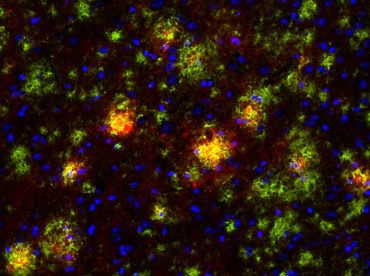June 26, 2015

The view from the trenches: a conversation about Alzheimer’s disease
This immunofluorescence picture shows the brain of an Alzheimer’s disease mouse model, also known as the TgCRND8 mouse. In the picture, the amyloid beta plaques are stained green and the microglia, or immune cells of the brain, are stained red. Image courtesy of Luke Woods. By Caleb O’Brien | MU Bond Life Sciences Center Jean Camden…